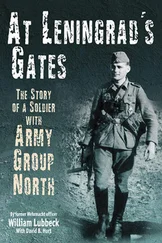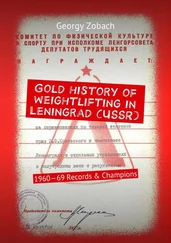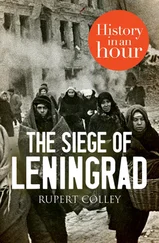Not until 3 July, eleven days after the invasion, did Stalin make his first wartime broadcast. Unpolished but immediate—the rim of the glass clicking against his teeth as he took sips of water—it was, in the words of the BBC’s Moscow correspondent Alexander Werth, ‘a great pull-yourselves-together speech, a blood-sweat-and-tears speech, with Churchill’s post-Dunkirk speech its only parallel’. {23} 23 Alexander Werth, Russia at War, 1941–1945 , pp. 162–7.
Opening with novel, almost beseeching informality—‘Comrades, citizens, brothers and sisters! I appeal to you, my friends!’—it called the nation to total war in the tradition of the struggle against Napoleon. Production was to go into overdrive, and ‘whiners, cowards, deserters and panic-mongers’ were to be put in front of military tribunals. Not a ‘single railway truck, not a pound of bread nor pint of oil’ was to be left in the path of the fascist enslavers’ advance, and behind their lines partisans were to blow up roads, bridges and telephone wires and set fire to forests, stores and road convoys. ‘Intolerable conditions’ were to be created for ‘the enemy and his accomplices’, who were to be ‘persecuted and destroyed at every step’. ‘All the strength of the people’, Stalin rounded off with sledgehammer emphasis, ‘must be used to smash the enemy. Onward to Victory!’
The speech had a steadying effect, in Leningrad as elsewhere. In Moscow’s cinemas, Werth remembered, audiences broke into frantic cheering whenever Stalin appeared on a newsreel, ‘which, in the dark, people presumably wouldn’t do unless they felt like it’. {24} 24 Ibid., p. 184.
Though in reality Stalin had grossly understated the success of Barbarossa, claiming heavy German losses, Russians now felt that they had heard the worst, and stood on firm ground. The seventy-year-old watercolourist Anna Ostroumova-Lebedeva (who had studied under Repin, Bakst and Whistler, and seen out three tsars) listened with her maid Nyusha in their flat near Finland Station on Leningrad’s Vyborg Side. ‘Today’, she wrote in her diary, ‘I listened, with heartfelt anxiety, to the wise words of Comrade Stalin. His words pour feelings of calm, hope and cheer into the soul.’ {25} 25 Anna Ostroumova-Lebedeva, Avtobiograficheskiye zapiski: Leningrad v blokade , p. 250.
She would have been less reassured if she had known how far the Germans had really got. For the Soviet Union, the first eleven days of the war were devastating. Arrayed against it was the largest invasion force the world had ever seen: four million German and Axis troops, 3,350 tanks, 7,000 field guns, over 2,000 aircraft and 600,000 horses. In the north in particular, the Red Army was heavily outnumbered, with 370,000 troops compared to the Wehrmacht’s 655,000. (Numbers of guns, tanks and combat aircraft were roughly similar. {26} 26 David Glantz, The Battle for Leningrad 1941–1944 , pp. 30–31.
) The Germans were also better led and organised. Army Group North—one of three that attacked all along the Soviet—German border—was led by Field Marshal Wilhelm Ritter von Leeb, the sixty-five-year-old career soldier who had led the breaking of the Maginot Line. Under him, in command of the Sixteenth and Eighteenth Armies, came General Ernst Busch and General Georg von Küchler, fresh from victory in France. The Army Group’s armoured spearhead was Panzer Group Four, commanded by General Erich Hoepner, with under him Colonel Generals Hans Reinhardt and Erich von Manstein, both among Hitler’s most brilliant tank commanders. The Red Army’s Northwestern Army Group, in contrast, had lost its leadership to Stalin’s purges and was in the midst of traumatised reorganisation and redeployment. The bulk of its forces were understrength, and some had not even been issued with live ammunition. Its defences were also physically inadequate: by June 1941 the army had largely abandoned its bunkers along the old, pre-1939 frontier—the so-called ‘Stalin Line’—but was still in the process of constructing fortifications further west.
Most of all, Germany had the advantage of surprise. When Soviet frontier guards woke to the sound of exploding shells in the early hours of 22 June, many had not yet even received Stalin’s reluctant order of less than three hours earlier to go on to full alert. Flabbergasted and afraid to take the initiative, junior officers wired for orders: ‘We are being fired upon!’ ran a typical appeal, ‘What shall we do?’ The air force did not have time to mobilise either: Luftwaffe pilots were astonished to find Soviet aeroplanes lined up, uncamouflaged, on forward airfields, and even those that managed to take off proved easy targets. ‘The Russian was well behind our lines’, wrote a Finnish air ace of one, ‘so I held my fire, though I am not at all sure that I could have brought myself to finish off such a lame duck… His inexperienced flying suggested that he could have hardly been more than a duckling.’ In all 1,200 planes were destroyed at sixty-six bases in the first day of the war, three-quarters of them on the ground. {27} 27 Eino Luukkanen, Fighter over Finland , p. 116; Salisbury, The 900 Days , p. 106.
For the rest of the year the Germans had complete air superiority, and were able to strafe and dive-bomb as much as their resources—still depleted by the Battle of Britain—allowed. The fact that the air raids on Leningrad did not begin until early September was due to delay in repairing airfields that the Luftwaffe had itself earlier bombed, and the city would have been far more badly damaged had it not been for its hundreds of searchlights, anti-aircraft guns and ‘listeners’—the acoustic devices, shaped like giant gramophone horns, that tracked the approach of what were often the same bomber crews who had blitzed London twelve months earlier.
With numbers, leadership, surprise and air superiority all on its side, Army Group North advanced at astonishing speed. Though Leningraders did not know it, three days into the war von Leeb’s Panzer groups had already overrun most of Lithuania, and the following day they seized a bridgehead across Latvia’s River Dvina, a line the tsarist armies had held for two years in 1915–17. ‘It is unlikely I will ever again experience anything comparable to that impetuous dash’, von Manstein wrote in his (notoriously selective) memoirs; ‘It was the fulfilment of every tank commander’s dream.’ In Lithuania and Latvia, most of whose citizens rejoiced to see the Soviets pushed out, women handed the German cavalrymen bunches of flowers and nationalist militias joined in the fighting and the lynching of Jews.
As the German attack sped forward, the Red Army’s communications broke down. Shouted telephone calls were cut off mid-sentence; staff-cars dodged between smoking villages in search of command posts. Orders, when they arrived at all, bore no relation to reality, telling officers to deploy forces that no longer existed, or to defend points already far in the German rear. Typical was the experience of the 5th Motorised Rifle Regiment. Like other border units, it was not part of the regular army but came within the sprawling security empire of the People’s Commissariat for Internal Affairs, the NKVD. The outbreak of war seems to have taken the regiment completely by surprise. At ten o’clock on the morning of 22 June it was travelling along the road from Vilnius northwards to Riga when it was suddenly dive-bombed by German Stukas. ‘The town of Siauliai burned’, the regiment reported, and ‘the German planes dealt brutally with the refugees and troops moving along the road. From this it became clear that war had begun.’ The regiment took shelter in a wood, where a courier reached it with orders to proceed urgently to Riga, where ‘disturbances’ had broken out. On arrival, the regiment found the city in the grip of a rising by anti-Soviet Latvian partisans, who had set up machine-gun posts in church towers, attics and behind the top-floor windows of the city’s Art Nouveau apartment buildings. Red Army and NKVD headquarters, the offices of the Latvian Communist Party and the railway station were all under attack. Rallying the local garrison, the regiment ‘engaged the fifth columnists in hard fighting. Incoming fire from windows, towers or bell-towers was answered with fire from machine guns and tanks.’ It shot 120 ‘scoundrels seized from amongst the fifth columnists’ out of hand, and also took out reprisals against civilians: ‘Before the corpses of our fallen comrades the personnel of the regiment swore an oath mercilessly to smash the fascist reptiles, and on the same day the bourgeoisie of Riga felt our revenge on its hide.’
Читать дальше











